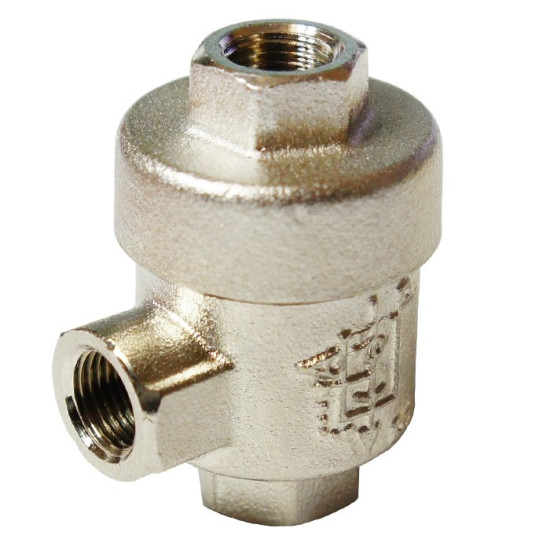- Compressors
- Pneumatic actuators
- Gas springs
- Valves and solenoid valves
- Air treatment
- Pneumatic tools
- Electric tools
-
Pneumatic connections
- Push-in fittings
- Simple
- Simple with shut-off valve
- Elbows
- Angular
- Elbow extended
- Angle reduction
- Angled with shut-off valve
- Angular bearing
- Grommets
- Grommets with check valve
- Grommets with shut-off valve
- PG reductions
- PGJ reductions
- PUT tees
- PY tees
- PYGJ tees
- PT tees
- PST tees
- PWT tees
- PW reducing tees
- Reducing PWJ tees
- Cross-connectors of the PZA
- IQSKH shut-off valves
- Flow regulating valves
- Venting 3/2
- SC regulating valves
- Splitters
- Straight bulkhead couplings
- PP end caps
- PPF end caps
- Angular bulkhead couplings
- Mini push-in fittings
- Metal push-in fittings
- Metal twisted fittings
- Twisted fittings for copper conductors
- Quick couplings TYP21 DN5
- Quick couplings TYP26 DN7,2
- Quick release couplings TYP27 DN10
- Fasteners
- Claw couplings
- Ball valves
- Separating strips
- Worm clamps
- Thread seals
- Noise silencers
- Push-in fittings
- Air hoses, reels
- Manometers and sensors
- Dehumidifiers
- Compressed Air Catalytic Converters
- Pneumatic installations
- Screw feeders
- Dampers and gate valves
- Pressure tanks
- Condensate separation
- Inert gas generators
- Medical kits
Quick exhaust valves
The principle of operation of quick release valves
Quick release valves are valves that automatically open the exit path to the atmosphere when the air pressure drops in the exit path.
The task of these valves is to quickly empty the chambers of pneumatic receivers, e.g. actuators.
Thanks to their use, it is possible to significantly increase the speed of movement of the actuator piston, especially single-acting.
In order to obtain the proper effect, quick exhaust valves should be installed directly at the actuator connections to allow for a significant shortening of the used air outflow path to the atmosphere.
The flow depends on the model and is between 2.5 and 4.5 m³ / min.
Odkryj Asystenta AI Pneumatig
Strona główna: Kliknij w animowany orb AI, aby rozpocząć rozmowę z inteligentnym asystentem.
Każda strona: Skorzystaj z przycisku AI w prawym dolnym rogu — dostęp do asystenta zawsze pod ręką!
Zapytaj o produkty, opisz swoje potrzeby lub wyślij zdjęcie części. Asystent, wspierany najnowocześniejszą technologią AI, jest dostępny 24/7.


Login and Registration Form